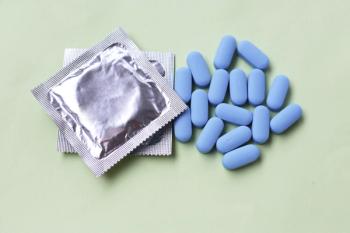
New Study Suggests Alopecia After COVID-19 Vaccine Rare but Possible
A literature review found a link between COVID-19 vaccination and alopecia, with most cases experiencing hair loss within 1 month after the first dose. However, the small sample size and limited data call for further investigation.
Although
Some previous research has shown adverse events (AEs) after the COVID-19 vaccine. In the Irish Journal of Medical Science, occurrence of postvaccination hair loss was confirmed by trichoscopy in approximately 25% of participants who received a COVID-19 vaccine.2
Other common documented AEs included headache, nausea, vomiting, fever, fatigue, itching, muscle pain, joint pain, and local redness or swelling; rare cases of anaphylactic shock. have also been reported.1 The development or recurrence of AA has also been found to be a potential result of the vaccine.
In a systemic literature review, data were compiled on cases of patients who experienced hair loss following the vaccine. The study design did not have any restrictions on the geographic region or the language a trial was conducted in.
After an extensive screening process, 25 articles were included in the literature review. The regions ranged from America, Brazil, China, Colombia, Egypt, Iran, Italy, Jamaica, Japan, Qatar, Switzerland, and Taiwan. A total of 51 patients were analyzed in the review, comprising 60.7% female patients and 39.3% male patients who were an average age of 37.6 years.
More than half of patients (52.9%) developed new-onset AA after receiving the COVID-19 vaccine and almost half of patients (47.1%) presented with relapsed or aggravated AA. It is important to note there were 2 patients with a family history of AA and 2 with a family history of thyroid dysfunction.
Previous research has found links between hypothyroidism and increased risk of AA, as well as autoimmune diseases.3 Additionally, there is evidence of COVID-19 triggering a variety of autoimmune conditions like AA.4
Patients who developed AA had most commonly received the Pfizer vaccine (45.1%) followed by nCoV-19 (27.5%), Moderna mRNA-1273 (19.6%), Sinopharm (3.9%), and SinoVac (3.9%).1
Of the 51 patients, 50.9% experienced hair loss within 1 month of the first dose and 25.5% experienced hair loss within 1 month of the second dose. One month after the third dose, 13.7% experienced hair loss. There were only 5.9% who endured hair loss within 2 to 3 months after the second dose. Also, only 2% had hair loss within 1 to 2 months after the second dose and within 3 months after the second dose. Overall, incidence rates decreased gradually overtime.
More than half of the patient population (66.7%) had patchy AA, and 15.6% progressed to alopecia totalis; 17.7% escalated to alopecia universalis.
There were 46 patients of the 51 who received documented treatment for AA, 38 of whom received topical or systemic corticosteroids. Seven patients were treated with 5% minoxidil solution and 2 received platelet-rich plasma therapy. Ultimately, 10 patients experienced good treatment effects with hair loss reduction, increased regeneration, or complete regeneration.
The researchers utilized a causality assessment tool developed by the World Health Organization to examine the causality assessment between COVID-19 vaccines and cases of AA reported in previous studies. Based on this assessment, 19.6% of patients were classified as having causal association to immunization to the COVID-19 vaccine, 27.4% were indeterminate, and 53% were coincidental association. None of the cases were considered as unclassifiable.
Study results declared that the women in the study population had a higher prevalence rate (60.7%) of AA compared with the men. Research has speculated this could be due to women’s higher susceptibility to autoimmune diseases. However, a separate study focused on the population of San Bernardino found vaccinated women had the lowest risk of AA (OR, 0.32; P < .05), and there were no identifiable incidences of AA among the vaccinated population compared with the unvaccinated population.5
The study findings are limited in their generalizability because of the small number of cases with missing data for treatment and outcomes.1 Participants also may have been subject to potential diagnostic bias. Further, AEs that are suggested and publicized as associated to a vaccine can cause a preferential identification of cases due to increased awareness, and the literature review consisted of case reports and case series with limited data.
Patients with a history of AA or thyroid dysfunction are at a higher risk of developing AA after receiving the COVID-19 vaccine, and in this study, most such instances occurred within 1 month after the first dose, before gradually decreasing over time. The study suggests dermatologists should assess if they should administer the second dose if alopecia symptoms arise after the initial COVID-19 vaccine dose, to prevent irreversible AA.
References
1. Zhu Y, Ouyang X, Zhang D, et al. Alopecia areata following COVID-19 vaccine: a systematic review. Eur J Med Res. 2024; 29(356):1-16. doi:10.1186/s40001-024-01956-8
2. Ammar AM, Ibrahim IS, Mohamed AN, et al. Dermoscopy-assisted prevalence of hair loss after COVID-19 vaccination among an Egyptian population: a cross-sectional study. Ir J Med Sci. 2024;193(2):755-760. doi:10.1007/s11845-023-03493-5
3. Santoro C. AA may increase risk of hypothyroidism, AG needs further investigation. The American Journal of Managed Care®. April 14, 2024. Accessed July 15, 2024.
4. Scollan ME, Breneman A, Kinariwalla N, et al. Alopecia areata after SARS-CoV-2 vaccination. JAAD Case Reports. 2022;20:1-5. doi:10.1016/j.jdcr.2021.11.023
5. Santoro C. Study finds no link between COVID-19 vaccine, alopecia areata. AJMC®. March 9, 2024. Accessed July 15, 2024.
Newsletter
Stay ahead of policy, cost, and value—subscribe to AJMC for expert insights at the intersection of clinical care and health economics.














































